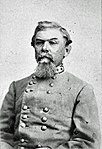
The Battle of Chickamauga, fought on September 18–20, 1863, between the United States Army and Confederate forces in the American Civil War, marked the end of a U.S. Army offensive, the Chickamauga Campaign, in southeastern Tennessee and northwestern Georgia. It was the first major battle of the war fought in Georgia, the most significant US defeat in the Western Theater, and involved the second-highest number of casualties after the Battle of Gettysburg.

The Battle of Stones River, also known as the Second Battle of Murfreesboro, was fought from December 31, 1862, to January 2, 1863, in Middle Tennessee, as the culmination of the Stones River Campaign in the Western Theater of the American Civil War. Of the major battles of the war, Stones River had the highest percentage of casualties on both sides. The battle ended in Union victory after the Confederate army's withdrawal on January 3, largely due to a series of tactical miscalculations by Confederate Gen. Braxton Bragg, but the victory was costly for the Union army. Nevertheless, it was an important victory for the Union because it provided a much-needed boost in morale after the Union's recent defeat at Fredericksburg and also reinforced President Abraham Lincoln's foundation for issuing the Emancipation Proclamation, which ultimately discouraged European powers from intervening on the Confederacy's behalf.
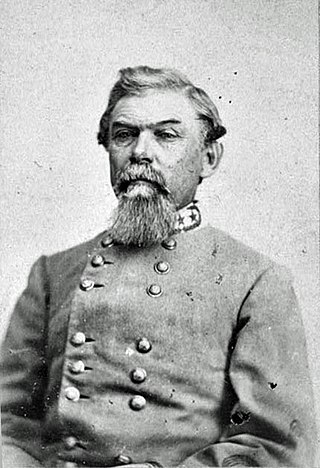
William Joseph Hardee was a career U.S. Army and Confederate States Army officer. For the U.S. Army, he served in the Second Seminole War and in the Mexican–American War, where he was captured and exchanged. In the American Civil War, he sided with the South and became a general. Hardee served in the Western Theater and quarreled sharply with two of his commanding officers, Braxton Bragg and John Bell Hood. He served in the Atlanta Campaign of 1864 and the Carolinas Campaign of 1865, where he surrendered with General Joseph E. Johnston to William Tecumseh Sherman in April. Hardee's writings about military tactics were widely used on both sides in the conflict.

The Army of Tennessee was the principal Confederate army operating between the Appalachian Mountains and the Mississippi River during the American Civil War. Named for the State of Tennessee, It was formed in the same state in late 1862 and fought until the end of the war in 1865, participating in most of the significant battles in the Western Theater.

The Battle of Perryville, also known as the Battle of Chaplin Hills, was fought on October 8, 1862, in the Chaplin Hills west of Perryville, Kentucky, as the culmination of the Confederate Heartland Offensive during the American Civil War. Confederate Gen. Braxton Bragg's Army of Mississippi initially won a tactical victory against primarily a single corps of Maj. Gen. Don Carlos Buell's Union Army of the Ohio. The battle is considered a strategic Union victory, sometimes called the Battle for Kentucky, since Bragg withdrew to Tennessee soon thereafter. The Union retained control of the critical border state of Kentucky for the remainder of the war.

The Atlanta campaign was a series of battles fought in the Western Theater of the American Civil War throughout northwest Georgia and the area around Atlanta during the summer of 1864. Union Maj. Gen. William Tecumseh Sherman invaded Georgia from the vicinity of Chattanooga, Tennessee, beginning in May 1864, opposed by the Confederate general Joseph E. Johnston.

Lieutenant-General Leonidas Polk was an American Confederate military officer, a bishop of the Episcopal Diocese of Louisiana and founder of the Protestant Episcopal Church in the Confederate States of America, which separated from the Episcopal Church of the United States of America. He was a planter in Maury County, Tennessee, and a first cousin twice removed of President James K. Polk. He resigned his ecclesiastical position to become a major-general in the Confederate States Army, when he was called "Sewanee's Fighting Bishop". His official portrait at the University of the South depicts him as a bishop with his army uniform hanging nearby. He is often erroneously referred to as "Leonidas K. Polk" but he had no middle name and never signed any documents as such.

The Battle of Missionary Ridge, also known as the Battle of Chattanooga, was fought on November 25, 1863, as part of the Chattanooga campaign of the American Civil War. Following the Union victory in the Battle of Lookout Mountain on November 24, Union forces in the Military Division of the Mississippi under Maj. Gen. Ulysses S. Grant assaulted Missionary Ridge and defeated the Confederate Army of Tennessee, commanded by Gen. Braxton Bragg, forcing it to retreat to Georgia.

The Tullahoma campaign was a military operation conducted from June 24 to July 3, 1863, by the Union Army of the Cumberland under Maj. Gen. William Rosecrans, and is regarded as one of the most brilliant maneuvers of the American Civil War. Its effect was to drive the Confederates out of Middle Tennessee and to threaten the strategic city of Chattanooga.
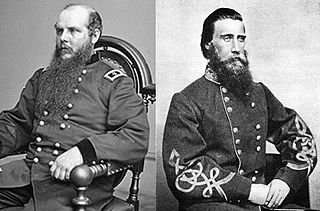
The Battle of Spring Hill was fought November 29, 1864, at Spring Hill, Tennessee, as part of the Franklin-Nashville Campaign of the American Civil War. The Confederate Army of Tennessee, commanded by Lt. Gen. John Bell Hood, attacked a Union force under Maj. Gen. John M. Schofield as it retreated from Columbia through Spring Hill. Because of a series of command failures, the Confederates were unable to inflict serious damage on the Federals and could not prevent their safe passage north to Franklin during the night. The next day, Hood pursued Schofield and attacked his fortifications in the Battle of Franklin, resulting in severe Confederate casualties.

The Franklin–Nashville campaign, also known as Hood's Tennessee campaign, was a series of battles in the Western Theater, conducted from September 18 to December 27, 1864, in Alabama, Tennessee, and northwestern Georgia during the American Civil War.

The Chickamauga campaign of the American Civil War was a series of battles fought in northwestern Georgia from August 21 to September 20, 1863, between the Union Army of the Cumberland and Confederate Army of Tennessee. The campaign started successfully for Union commander William S. Rosecrans, with the Union army occupying the vital city of Chattanooga and forcing the Confederates to retreat into northern Georgia. But a Confederate attack at the Battle of Chickamauga forced Rosecrans to retreat back into Chattanooga and allowed the Confederates to lay siege to the Union forces.

Alexander Peter Stewart was a career United States Army officer, college professor, and a general in the Confederate States Army during the American Civil War. He fought in many of the most significant battles in the Western Theater of the war and briefly took command of the Army of Tennessee in 1865.

Benjamin Franklin Cheatham was a Confederate general during the American Civil War. He served in the Army of Tennessee, inflicting many casualties on Gen. Sherman at Kennesaw Mountain, Georgia, but took the blame for General Schofield's escape at Spring Hill – a major factor in the Confederate defeat at Franklin, Tennessee in 1864. Later in life, he became a gold miner in California and a plantation owner in his home state of Tennessee.
The following Confederate States Army units and commanders fought in the Battle of Stones River of the American Civil War. The Union order of battle is listed separately. Order of battle compiled from the army organization during the campaign, the casualty returns and the reports.
The following Confederate States Army units and commanders fought in the Battle of Chickamauga of the American Civil War. The Union order of battle is listed separately. Order of battle compiled from the army organization during the campaign.

The Army of Central Kentucky was a military organization within Department No. 2. Originally called the Army Corps of Central Kentucky, it was created in the fall of 1861 as a subsection of Department No. 2, and continued in existence until the end of March 1862 when it was absorbed and merged into the Army of Mississippi, which was then re-organized as the Army of Tennessee on November 20, 1862.

The Chattanooga campaign was a series of maneuvers and battles in October and November 1863, during the American Civil War. Following the defeat of Maj. Gen. William S. Rosecrans's Union Army of the Cumberland at the Battle of Chickamauga in September, the Confederate Army of Tennessee under Gen. Braxton Bragg besieged Rosecrans and his men by occupying key high terrain around Chattanooga, Tennessee. Maj. Gen. Ulysses S. Grant was given command of Union forces in the West which was now consolidated under the Division of the Mississippi. Significant reinforcements also began to arrive with him in Chattanooga from Mississippi and the Eastern Theater. On October 18, Grant removed Rosecrans from command of the Army of the Cumberland and replaced him with Major General George Henry Thomas.
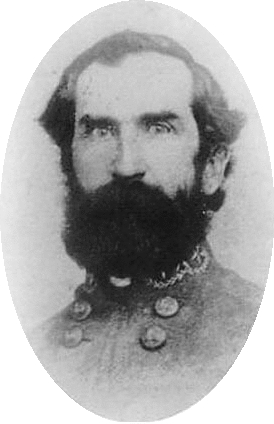
John King Jackson was an American lawyer and soldier. He served as a Confederate general during the American Civil War, mainly in Florida and the Western Theater of the conflict. Afterward Jackson resumed his law practice until dying from pneumonia a year after the war ended.
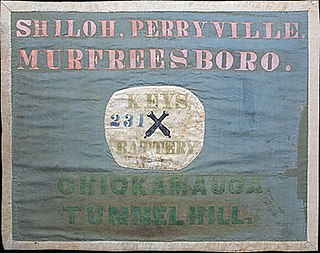
The Helena Artillery (1861–1865) was a Confederate Army artillery battery during the American Civil War. The unit was known by several other designations during the war including Clarkson's Battery, Company A, Shoup's Artillery Battalion, Calvert's Battery, and Key's Battery. The unit was occasionally assigned to artillery battalions from other states, so the Arkansas unit was at various times designated as Company C, 20th Alabama Light Artillery Battalion and later as Company H, 28th Georgia Artillery Battalion.





